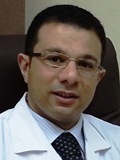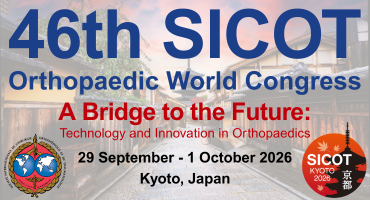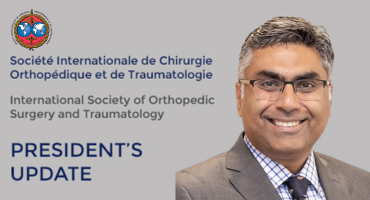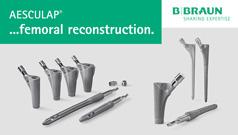History of Orthopaedics
The creator of the word ‘Orthopaedics’ and the ‘Crooked tree’ logo
 Ahmed Abdelazeem Ahmed Abdelazeem SICOT Active Member & SICOT Newsletter Editorial Board Member - Cairo, Egypt |
All orthopaedic surgeons worldwide know that the word “orthopaedics” is derived from the Greek words: “orthos” (ὀρθός) which means “straight” and “paidion” (παιδίον) which means “child”. However, who was the creator of this word and how did it come to be used?
The word “Orthopaedics” dates back to the middle of the 18th century, when a French medical doctor named Nicolas Andry de Bois-Regard, at the age of 82 years, published one of his famous books addressing the correction of deformities in children. This book was first published in Paris in 1741 in two volumes with the title ‘‘L’orthopédie ou l’art de prévenir et corriger dans les enfants les difformités du corps’’. One year after its great success, it was re-published in Brussels (1742), then one year later (1743) it was translated to English and published in London with the title ‘‘Orthopaedia or the art of correcting and preventing deformities in children’’ and, finally, in Berlin (1744) in German (Orthopaedie).
This book spread rapidly because of its simplicity and its target readers. It was not directed towards doctors or surgeons. As he said in his book: ‘‘this book is aimed exclusively at fathers and mothers and all people bringing up children who must try to prevent and correct any deformed part of the child’s body’’. Maybe that was the reason for this word to spread and become increasingly popular.
Nicolas Andry was born in Lyon, in 1658, from a relatively poor family. Being brought up under the influence of his two elder brothers who were priests, he started studying theology for some time. In 1690, he decided to give it up and changed his way towards medicine. He went on to study medicine at the Faculty of Rheims (which was dissolved four years afterwards by King Louis XIV) and finally graduated from the Faculty of Paris in 1697. Academically, he climbed the ladder in the College of France in very stable and confident steps from the date of appointment as a substitute in 1701 until being appointed as a Dean of the Faculty in 1724. Apart from being a hardworking physician, he was also a philosopher and a journalist. He was a member of the editorial board of the “Journal des Savants”, which is the earliest academic journal published in Europe. Working in these high ranked positions allowed him to enter a war against the “barber surgeons” who were the “official physicians” at that time in Europe. He tried to reduce their numbers and limit their work, not allowing them to operate other than in the presence of a doctor. However, politicians did not support his attitude and thoughts at that time and later he was dismissed from his position at the Journal des Savants and forced to resign as a Dean.
During his life, he wrote two remarkable books, one in the middle and other at the end of his life. In his early forties, he wrote his book titled ‘‘The generation of worms in the human body. The different kinds and types of this disease and the ways of preventing and curing it’’. After this book, he was given the name, the ‘‘father of parasitology’’. The second book “L’orthopedie” was published just 2 years before his death. It was divided into four books, with the first three making up the first volume. He expressed in a very simple and realistic way different methods of prevention and treatment of deformities in children. Although many things discussed in this book are still applicable in modern medicine, for example the use of padded braces in treatment of early scoliosis, two articles marked this book forever. First, is his long ‘‘semantic’’ preface in which he explains how and why he created the word orthopaedia: ‘‘as to the title in question it is formed from two Greek words, ‘‘orthos’’ which means straight, devoid of deformity and ‘‘paidos’’ which means child. From these two words, I formed that of Orthopaedics to express in one word what I have set out to do, namely to teach several ways of preventing and correcting deformities in children’’. The second is the famous engraving of the ‘‘crooked tree’’. Although many think that it represents a scoliosis correction, it was used by him as an illustration in Volume I for conservative correction of the curved tibia. He suggested gradual straightening of the limb ‘‘by bandaging the bent limb to an iron plate as if one wanted to straighten the crooked trunk of a young tree’’.
These two articles have marked the name and the logo of the art of treatment of musculoskeletal diseases until now. Although Nicolas Andry died in 1742 in Paris with the name “father of parasitology”, everybody must know that he is the creator of the word and logo of orthopaedics nowadays.

The English edition ‘‘Orthopaedia’’ (1743)



















